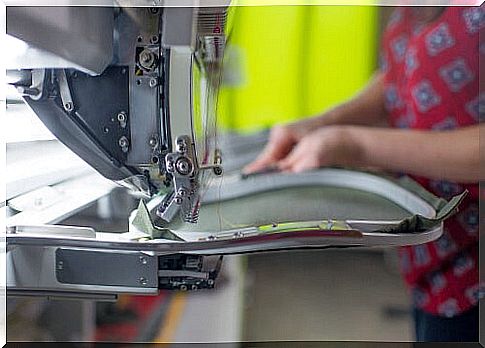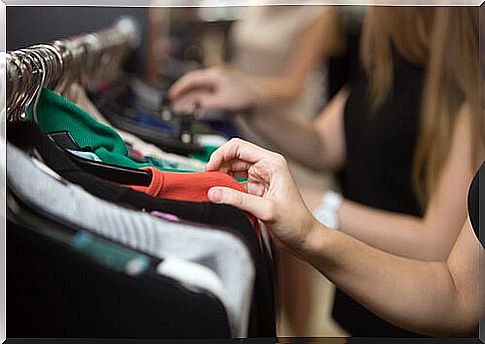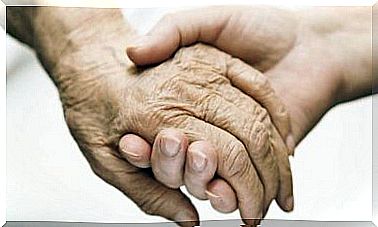Consumerism In The World Of Fashion

There is an issue that is passing unnoticed by many of us and that we want to talk about today. Consumerism in the world of fashion is becoming a more than worrying phenomenon. Unfortunately we are talking about something more than a compulsion. We are facing a phenomenon that has been studied in depth from social psychology.
The world of fashion, especially in the West, has changed drastically in just a few years. What we see is only the tip of the iceberg of a problem of international magnitude and of devastating consequences for a very important part of the population.
The extraordinary documentary The True Cost , brilliantly directed by Andrew Morgan and recently released on Netflix, shows us what the true price of a chilling reality is.
The truth is that, for some years now, what we perceive is that we can buy much more clothes because prices have fallen drastically. That, which seemed like good news to almost everyone (and some room in the tight economies that many face today), turns out to be one of the deadliest economic strategies humans have known today.
Why are our clothes now more affordable?
In the last decade we have seen a significant decline in the price of clothing. We had a slight idea that it was a consequence of globalization. Most of the fashion companies ended up working with countries like China, Bangladesh or Cambodia, where the cost of living is much lower than in the West, and therefore with a much lower cost of production as well.
Many of us had the mental image of people working on the other side of the world, in countries that, precisely for this reason, should be in the midst of economic development. We saw the problem from our navel: they have taken the industry elsewhere and have left an important job gap here.

But the problem is much more serious. Because the workers who sew those clothes that we can now buy better than ever are very far from any type of economic development. Neither present nor future.
Consumerism in the world of fashion generated by big companies has created slave countries. Places where textile workers work endless hours, in more than painful conditions and with all the laws of their country against it. And they do it in exchange for a miserable salary that does not allow them to cover even the most basic needs.
What’s going on?
The big fashion brands come to these countries with very concise proposals. They are the ones who set the price of production.
If a factory cannot afford a ridiculous price of production, the corporation takes its proposal to any other country. In this way, garment factory owners and the governments of the countries themselves are forced to agree to work for practically nothing.
Counting that the biggest part of the pie is in the economic benefit of the cost of production / final sale price, we find that millions of workers are doing their work for practically nothing. Meanwhile, the big fashion corporations are doubling and tripling their profits every quarter.

Consequences of consumerism in the world of fashion
To give us an idea: in Cambodia, recently, workers from fashion clothing companies marched in the streets to ask for a salary increase of up to $160 a month. The government of their country attacked them using the armed forces and in a few days several workers were killed.
There are workers in Bangladesh who work for $12 a month. And they do it in the worst conditions imaginable, in buildings that collapse leaving thousands of dead under the rubble.
Although it is true that in these countries the cost of living is lower than ours, those 12 dollars a month do not give them anything. They cannot give their children an education, they cannot maintain minimally acceptable living conditions. In short, they cannot get out of a misery that has become a veritable prison for millions of people and their future generations.
The true price of consumerism in the world of fashion
The dyes used, the pesticides for the mass production of cotton fabric and the unsanitary conditions in which all these clothes are produced are having an impact on the environment and on the health of millions of people of whom today we still have no idea. of its true scope.
All this is happening so that we can buy a 5 euro T-shirt, every week. We do it because since it only costs us 5 euros, we do not value it. We can throw it away and buy another one whenever we want.
Big companies seem to have no intention of solving this. But the real question is can we stop it? Can we start to become aware of the real price of the things we buy? In this life the most important value is the money that we can spend?
A shared illusion
This ugly reality has much of a mirage. In our westernized world we are at a time when the middle class has practically lost its status. He has lost the purchasing power in the things that are really important and necessary. It is increasingly difficult to access a home, good health insurance or a good education.
However, statistics show how we are still able to feel with purchasing power because we can go shopping and always come home with a good offer. However, in the end it is still a hoax. And it’s a self-deception that is literally costing human blood on the other side of the planet.
Ultimately, we are the ones who consume. Without our compulsive shopping this ugly business could not continue . Perhaps it is time to start becoming aware of what is behind each garment we buy. To begin to value what we have and not to discard it quickly because “we can buy cheaper.” Sure we can; The question is, should we do it? That is our true power. One much more important than purchasing power.









